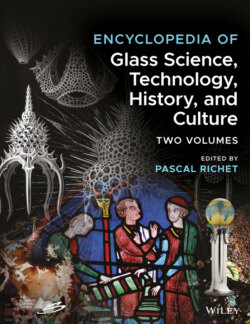Читать книгу Encyclopedia of Glass Science, Technology, History, and Culture - Группа авторов - Страница 278
2.1.3 Atomic Interactions and Chemical Bonds
ОглавлениеBonds constituting the edges of an atomic network represent simple mappings of atomic interaction potentials among the constituent atoms. For the purpose of TCT:
1 Pair interactions are mapped into narrow potential wells, forming linear bonds of fixed length between neighbors. The tails of pair interaction potentials are ignored. Whereas this assumption is reasonable for short‐range interactions, its validity is questionable for long‐range coulombic potential, especially in BCT.
2 Among many‐body interactions, only triplet interactions are retained. They, together with next‐nearest neighbor pair interactions, form the angular bonds at the vertices. Whereas angular constraints are important in BCT, they do not play any direct role in the PCT.
